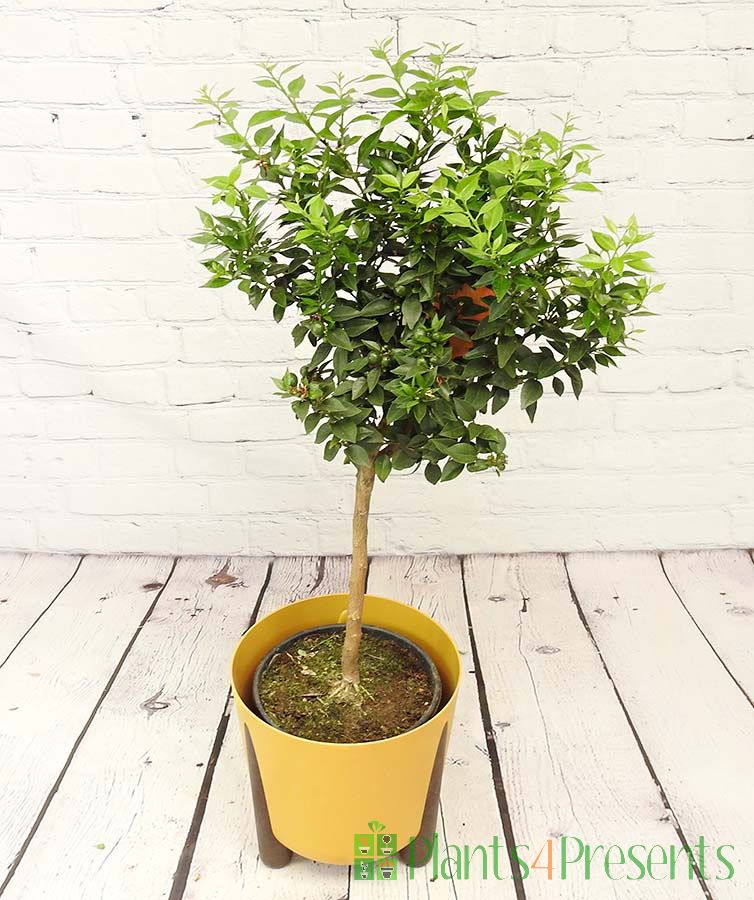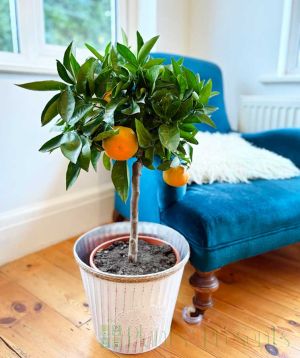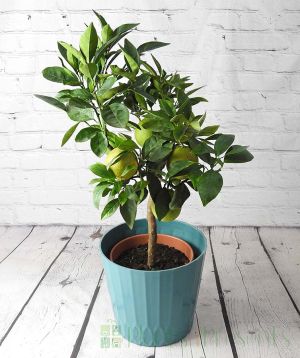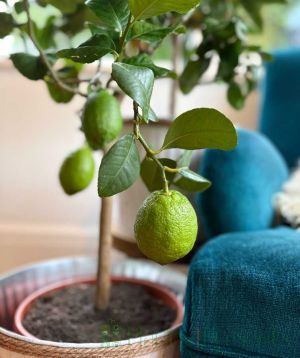Large Chinotto
Out of stock


- Unusual bitter orange variety used to make Campari
- Delivered gift wrapped and boxed with a handwritten greetings card
- Order by 3pm for next day delivery
Sorry we don't have any Large Chinotto available at the moment, but we do have lots of other lovely citrus plants available for next day delivery.
A great gift for someone who likes to grow something a little bit different, these oranges are a little hardier than most and can take temperatures as low as zero for short periods.
This unusual citrus tree (Citrus myrtofolia) has a much smaller leaf than other citrus trees and is one of the hardiest orange trees as well as being a really unusual variety in the UK. They make great gifts for a citrus collector or someone who likes their cocktails as their medium sized sour orange is used to make the popular Italian drink Campari!
Good to know: Chinottos don't always have the neatest of growth habits and need a bit of training longer term to get them into a neat lollipop shape.
 4.9/ 5
14 reviews
4.9/ 5
14 reviews




It's a nice, symmetrical, healthy plant; looks like it's going to bear quite a lot of fruit.

Beautiful tree with lots of fruits!

High quality tree was delivered as always! Excited to see what Chinottos taste like - a lot of fruits on their way

Very happy that not only I could purchase the tree but I could also choose the vase and the card!

Chinotto plant arrived looking good, and I like the gift pot as well.

Looks healthy and beautiful

Very good service and healthy looking plants.

I received a beautiful and healthy plant, on time and beautifully presented.

I received a lovely, sturdy little tree that had fruit on it. It is healthy and pest free. Excellent.

Great healthy looking plant , with 3 fruit on it . Excellent, very pleased .

These instructions are sent with the plant gift
Chinottos (Citrus myrtifolia) or myrtle leaved orange originate in China but have been adopted by the Italians who make a traditional citrus and herbal drink of the same name.
Despite their exotic origins Chinottos do surprisingly well in this country and are hardier than a lot of other oranges and mandrins. They have both tasty orange fruit and fragrant white star shaped flowers and can bring pleasure for years with the right care.
Citrus trees need lots of light. A conservatory is ideal, but they will also be happy near a window in a cool, bright room. In the summer and autumn, your citrus will thrive outdoors in full sun or partial shade. However, these trees are not hardy and will need to come inside as soon as the outdoor temperatures are near 5 degrees Celsius. When indoors, try to keep your plant away from cold draughts and any heating source.
Citrus are best kept in small pots here in the UK, they will need to be monitored regularly to check when the topsoil is dry. It is best not to have them on a routine water and let them tell you when they are next ready for a drink. When the topsoil is bone dry, remove the pot from the outer pot cover. Water thoroughly from the top until excess water drains right through the pot and out of the bottom and never leave your plant sitting in water. Sometimes if the soil is very compact this may take several waterings and is easiest to do in a kitchen sink. In the winter you should expect to water thoroughly still, making sure to soak the soil, but you might only need to do this once from anything between 1 to 4 weeks, depending on how quickly the soil dries out. In the summer months you may need to water every other day, but do not stand your plant in water. Don't worry if the soil feels dry between waterings, but if the leaves start to droop or curl you know it is thirsty, so water straight away. If you are having gradual leaf drop where you have a few leaves falling off each day, your plant is being overwatered.
In the summer, citrus trees will benefit from summer citrus feed every week to encourage growth, We use our Summer citrus fertiliser from March until the end of September. Through winter, from October until the end of February, we use the winter citrus fertiliser every time we water.
Citrus grow quite slowly; if you need to, repot in the spring only going up 1 pot size using a fast-draining compost suitable for container plants. As a general rule, citrus tend to produce flowers in late spring followed by small green fruits that can take 10 months or more to fully ripen. However, in this country, many varieties don’t follow a strict season and can fruit or flower at any point during the year.
Problem Solving
Citrus trees are not the easiest of plants but they are very rewarding. Look out for signs of trouble and try to treat problems early. The most common problem is leaves dropping due to over or under-watering. If leaves are crisp when they drop, this is due to underwatering; if they are leathery the chances are it has been over-watered. A return to a regular and thorough watering routine should lead to recovery.
If new growth is very light in colour or has mottled markings your plant may be lacking trace elements. A good dose of citrus feed should soon green up the leaves.
Our citrus trees are grown in a pesticide-free environment. In the unlikely event that you find pests, e.g. aphids, these can be removed by hand or with a soap and water spray. Check our recommended organic plant pest treatment for other pests here
We also have several pages and a video on more detailed citrus care here














